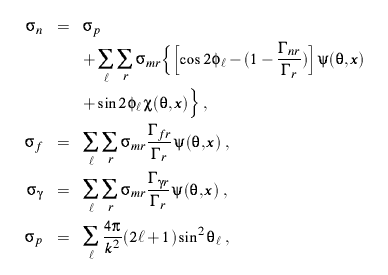
where
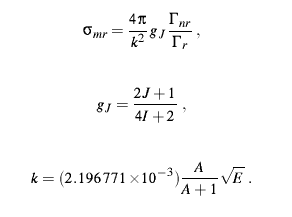
The resonance energies, J values, total widths, and partial
widths are all given in the ENDF file; see ER,
AJ, GT, GN, GG,
and GF below. The actual resonance energy is different
from the nominal Er value due to the "shift
factors" S. The actual neutron width is different from
GN due to the "penetrabilities" P. These two
quantities are shown in the following:
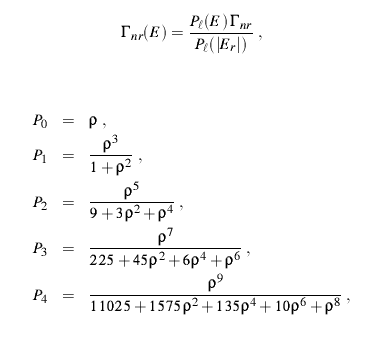
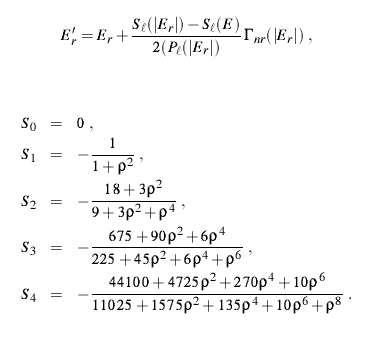
The phase shifts in the SLBW formulas are given by
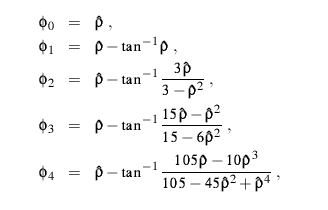
These quantities depend on rho=k*a and rho-hat=k*a-hat.
There are several options for choosing the two characteristic lengths
a and a-hat. The most common is to use AP
from the file for the "scattering radius" a-hat and to compute
the "channel radius" a based on the nuclear size,
0.123*AWRI1/3+0.08. Other options allow for using
the scattering radius for a or for having an energy-dependent
scattering radius.
At zero temperature, the resonance shapes in the SLBW formulas are given by
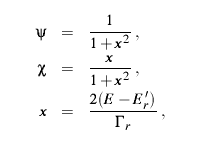
but for higher temperatures, we can use
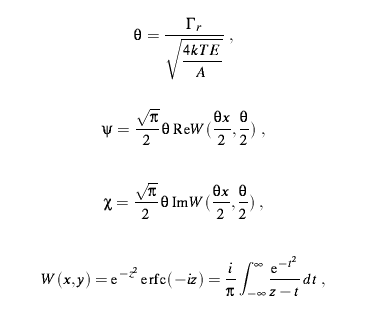
This is a very fast way to generate Doppler-broadened cross sections from SLBW resonances, but the use of the BROADR module of NJOY is more general, and the psi-chi option of RECONR is rarely used.
The following quantities are defined for SLBW subsections:
- SPI
- spin I of the target nucleus.
- AP
- scattering radius in units of 10-12 cm.
- NLS
- number of l values (neutron orbital angular momentum) in this energy region. A set of resonances is given for each l.
- AWRI
- ratio of the mass of a praticular isotope to that of a neutron.
- QX
- Q value to be added to the incident particle's center-of-mass energy to determine the channel energy for use in the penetrability factor. Could be used for competition with discrete inelastic scattering, but this is not implemented in NJOY. QX will be zero unless LRX is nonzero.
- L
- value of l.
- LRX
- flag indicating whether this energy range contains a competitive width. Currently not implemented in NJOY.
- NRS
- number of resolved resonances for the current l value. (NRS<=600)
- ER
- resonance energy (in the laboratory system).
- AJ
- floating-point value for J (the total angular momentum of the resonance).
- GT
- resonance total width evaluated at the resonance energy ER.
- GN
- neutron width evaluated at the resonance energy ER.
- GG
- radiation width, a constant.
- GF
- fission width, a constant.